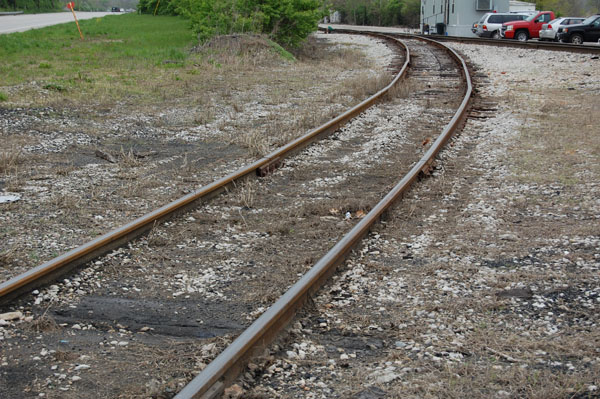For many folks, track just serves as a means to an end, that being to guide the trains from one end of the room to the other. It doesn’t matter to these folks whether the setting is realistic or bare plywood, watching a train chug along is the main show. For others, I think it is safe to say that, regardless of how you lay your track, you’d like it to look as realistic as possible. Weathering any kind of track will greatly enhance the appearance, regardless of whether it is sectional, flex track or handlaid.
For decades the standard advice was paint the rails with Floquil Rail Brown, mix in some Grimy Black around turnouts and other special work like crossing diamonds and, splash a little Mud color around both sides of grade crossings. Job done, move on, what’s next?
Not so fast. There’s more to weathering track than these three colors, especially since the Floquil line has been discontinued. How about the ties? What about the ballast and the rest of the right-of-way? Aren’t they affected by the elements too?
We tend to habitually treat the aspects of a layout independently. Must we always separate the elements into tidy little boxes, or might we see them as pieces of an integrated whole? The track is as much a part of scenery as groundcover, trees or structures, in that it needs to reflect the influence of its surroundings or it will stick out like a sore thumb.
I think one reason modelers hesitate to do creative stuff like weathering is the perceived notion that you have to be an artist before picking up a paintbrush. Not so. All it takes is some careful observation and some good reference photos and notes.
I’ve put together a short PDF guide to weathering track that is now available to download. It’s an excerpt from my book Detailing Track, and includes additional photos that are not in the print version. I’ve also updated the text to improve the flow and continuity as a stand-alone work. It’s 24 pages of helpful information you can put to use. I’m proud of it and pleased to offer it as a free download. Here’s the link to get your copy:
http://www.ostpubs.com/
Regards,
Mike

Hi Mike
Another good article bit if I may add a few further observations.
Not only is the traffic important but also what it’s doing at the location being modelled. We all know that there will be more oil and grease where a locomotive stands but there is also an increase in brake dust where trains are slowing. This effect is most obvious on double track gradients where the downhill line will appear much lighter and more leathery coloured than the uphil one.
The dirt build up on track is also directional. If you look towards the direction of travel the track will appear cleaner than if you look with the direction of travel. This effect is increased as the line speed increases but again a high speed double track will show this effect. If you are dusting track with an airbrush it’s worth bearing this in mind and spraying from the direction of travel only.
Cheers
Jim
Excellent observations Jim. Thanks! What about the weathering pattern on bi-directional single track?
Regards,
Mike
It’s still directional although it might be the same from each direction. Depends if the traffic is the same and if its doing the same thing in each direction. For example loaded coal trains may drop coal dust in just one direction. Most layouts (well uk ones) will have traffic braking as it comes on to the layout and accellerating as it leaves it. Assuming its end to end with a fiddleyards
Cheers
Jim